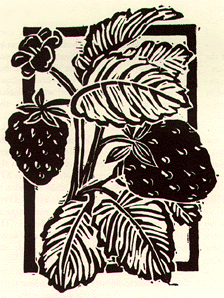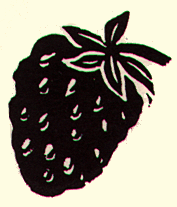 The mists of early morning over the meadows of Whately dissipate under a surprisingly warm spring sun. In the patchwork landscape, the chartreuse of late-April willows is punctuated by the occasional pink-and-white “cup and saucer” magnolia, three-quarters of its way into full bloom. Although it is just before eight o’clock, there’s a strong impression that the farming business of Whately has already been hours in the doing. Edging the fields closest to the road at Nourse Farms, dark, glossy rhubarb thrives in the still-cool air. A buzzing tractor heads for the horizon.
The mists of early morning over the meadows of Whately dissipate under a surprisingly warm spring sun. In the patchwork landscape, the chartreuse of late-April willows is punctuated by the occasional pink-and-white “cup and saucer” magnolia, three-quarters of its way into full bloom. Although it is just before eight o’clock, there’s a strong impression that the farming business of Whately has already been hours in the doing. Edging the fields closest to the road at Nourse Farms, dark, glossy rhubarb thrives in the still-cool air. A buzzing tractor heads for the horizon.
The farming business of the Connecticut River Valley has in fact been flourishing since the middle of the 17th century – but Tim Nourse, an energetic and engaging man who began farming in Whately in 1969 with his wife, Mary, has a relationship to those early farmers as parallel as that of the alphabet to the personal computer.
Whately may still look a bit like the 19th century, but the facts belie its bucolic appearance. Tim Nourse presides over an international fruit business – and the size of the fruit is the only thing that’s small about it. In fact, at any chic restaurant in California’s Sonoma Valley or in the Los Angeles basin, the strawberries in your strawberries Romanoff could be an issue from a plant cell grown in the lab at Nourse Farms in Whately, Massachusetts.
In 1999, Nourse Farms will ship 15 million strawberry plants to growers and gardeners around the world. That’s not to mention raspberries, blueberries, blackberries, currants, and gooseberries, as well as asparagus, rhubarb, and horseradish, which will also be sent to fields and gardens as far as Sweden.
As Nourse sits in his cramped office at Nourse Farms, every surface covered with publications, papers, and notes, it is clear – although he is a gracious host – that the boxed boundary of this office is not his natural habitat. Above his desk is a late-19th-century photograph, quite romantic, of a farmer walking home from the field. We’re looking at the subject’s back, his sharp hoe swung across his shoulder, and a century later the satisfaction in his body still speaks: The day in the field has ended as a job well done.
Nourse grew up in Westborough, in eastern Massachusetts, on a farm that has belonged to his family since 1722. Today the Nourses’ son is the 10th generation to farm there.
Thirty years ago, when Tim and Mary Nourse bought 70 acres in Whately – acreage that would grow to 400, cutting across the boundaries of three towns – “we didn’t have lofty goals,” he says. One of three Nourse Farms board members had built a small fruit business in eastern Massachusetts; the group saw “an opportunity to try to farm something that wasn’t a commodity,” Nourse recalls. Although today raspberries make up a large percentage of the business, its basis has always been the strawberry.
The core of strawberry production is, of course, plant stock. “Until the 1970s,” Nourse says, “the United States Department of Agriculture would supply all the so-called nuclear stock to growers. But with budget and program cuts, each nursery must produce its own.”
 Because commercial growers make up 70 percent of Nourse Farms’ customer base, a propagation method was needed to secure a large volume of quality stock. In 1980, a tissue-culture lab was instituted at Nourse Farms, which today employs about 10 people and is under the direction of plant pathologist Susan Sheplick, who is also the director of greenhouse operations. The lab has a contract with Cornell University – USDA Beltsville for virus indexing (testing for plant viruses) and plant propagation. “It’s very unusual that a lay lab [that is, a lab outside a university or other institution engaged in scientific enquiry] is involved with this level of disease testing,” Nourse says.
Because commercial growers make up 70 percent of Nourse Farms’ customer base, a propagation method was needed to secure a large volume of quality stock. In 1980, a tissue-culture lab was instituted at Nourse Farms, which today employs about 10 people and is under the direction of plant pathologist Susan Sheplick, who is also the director of greenhouse operations. The lab has a contract with Cornell University – USDA Beltsville for virus indexing (testing for plant viruses) and plant propagation. “It’s very unusual that a lay lab [that is, a lab outside a university or other institution engaged in scientific enquiry] is involved with this level of disease testing,” Nourse says.
For example, strawberry plants are indexed by grafting a leaf from a test plant onto an indicator plant; viruses make themselves known by visual symptoms. The ELISA test is another indexing method, in which an enzymatic color reaction indicates the presence of a virus in a test plant.
The heart of the lab operation, though, is plant propagation through tissue culture, which supports the nursery operation of Nourse Farms.
Tissue culture is a means of producing whole plants from pieces of plant tissue. In Stage I of the tissue culture process, tiny sections are cut from the meristem, an area of actively growing cells near the tip of a stem, of an indexed, virus-free stock plant. The sections are placed on a white growth medium (his visitor notices that it looks a bit like marshmallow-in-a-jar) in a test tube under sterile conditions. In 10 to 12 weeks, each meristem develops into a plantlet.
The growing medium is changed, thereby forcing a Stage I plantlet to develop side shoots, which in turn multiply into a small clump of plantlets. In Stage II of the process, the clumps are separated into single plantlets and transferred onto fresh growing medium. Hundreds of bits of meristem produce thousands of plants.
Tim Nourse takes his visitor through the labs, where people are busily engaged with giant tweezers in a sterile environment under laminar flow hoods at four workstations. We also see the growth room, where thousands of glass jars bask in 16 hours of light per day and in a constant 72°F temperature – a good place to spend the winter, in the visitor’s opinion.
From the lab, the plants are taken to one of the seven Nourse Farms greenhouses for Stage IV development. Stage III, rooting cultures in the lab, is skipped over in this lab, as plants are rooted in the greenhouse in a soil-free medium in a highly humid environment. In 8 to 12 weeks plants develop a strong root system that will enable them to survive and grow in the field.
The tissue culture plants are sold as green, growing plants or as dormant plugs from cold storage at 28°F. Some are planted at Nourse Farms as foundation stock.
Because strawberry plants are shipped throughout the United States and to Sweden, Germany, Italy, and the Netherlands, they are bred for regional conditions, including the number of hours the plant will be exposed to sunlight. California varieties are “short-day” plants; those for the East and Midwest are “long-day plants.” Some are “day-neutral” and will fruit regardless of the number of hours of sun exposure. A grower in San Diego, for example, will order short-day plants, as the strawberry growing season in this temperate climate extends from January through February, when days are short.
As we walk through the Nourse Farms greenhouses, we’re greeted by enthusiastic choruses of “Hi, Tim” and “Hello, Tim.” It is clear that Tim Nourse is a well-liked and appreciated boss.
Nourse inspects a vast tray of tiny 6-week-old strawberry plants and pulls one out of its plastic incubator. “Feel these roots,” he says. “Aren’t they healthy and firm?”
Indeed. I recall a fairly recent trip to Tuscany, and the strawberries I hauled back from open-air markets. Might the fattest and the reddest among them have had a humble cellular beginning in a Whately, Massachusetts, greenhouse?
For specific instructions on planting, irrigation, mulching, and renovation of strawberry plants, consult Nourse Farms’ well-organized and comprehensive Web site: www.noursefarms.com.
